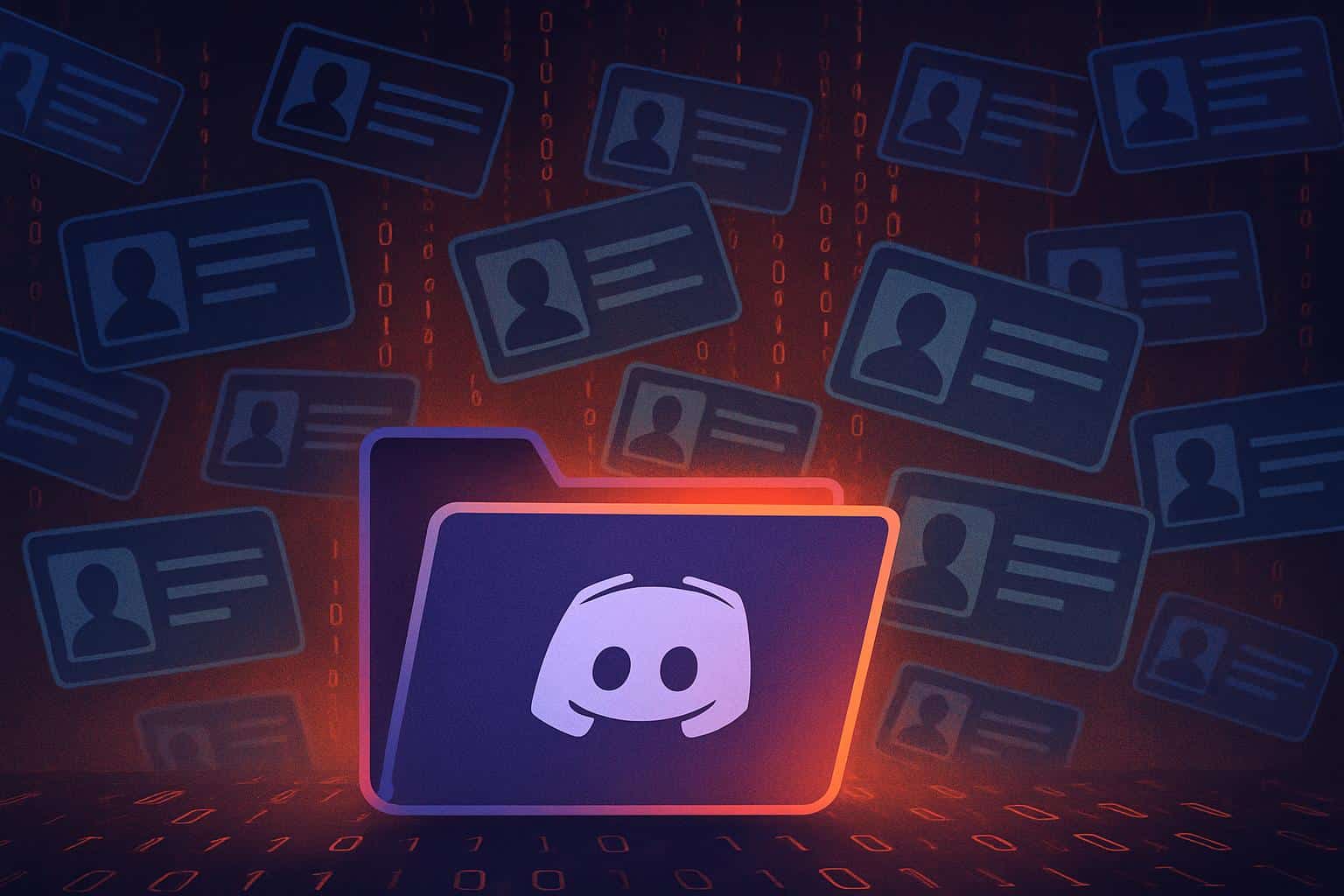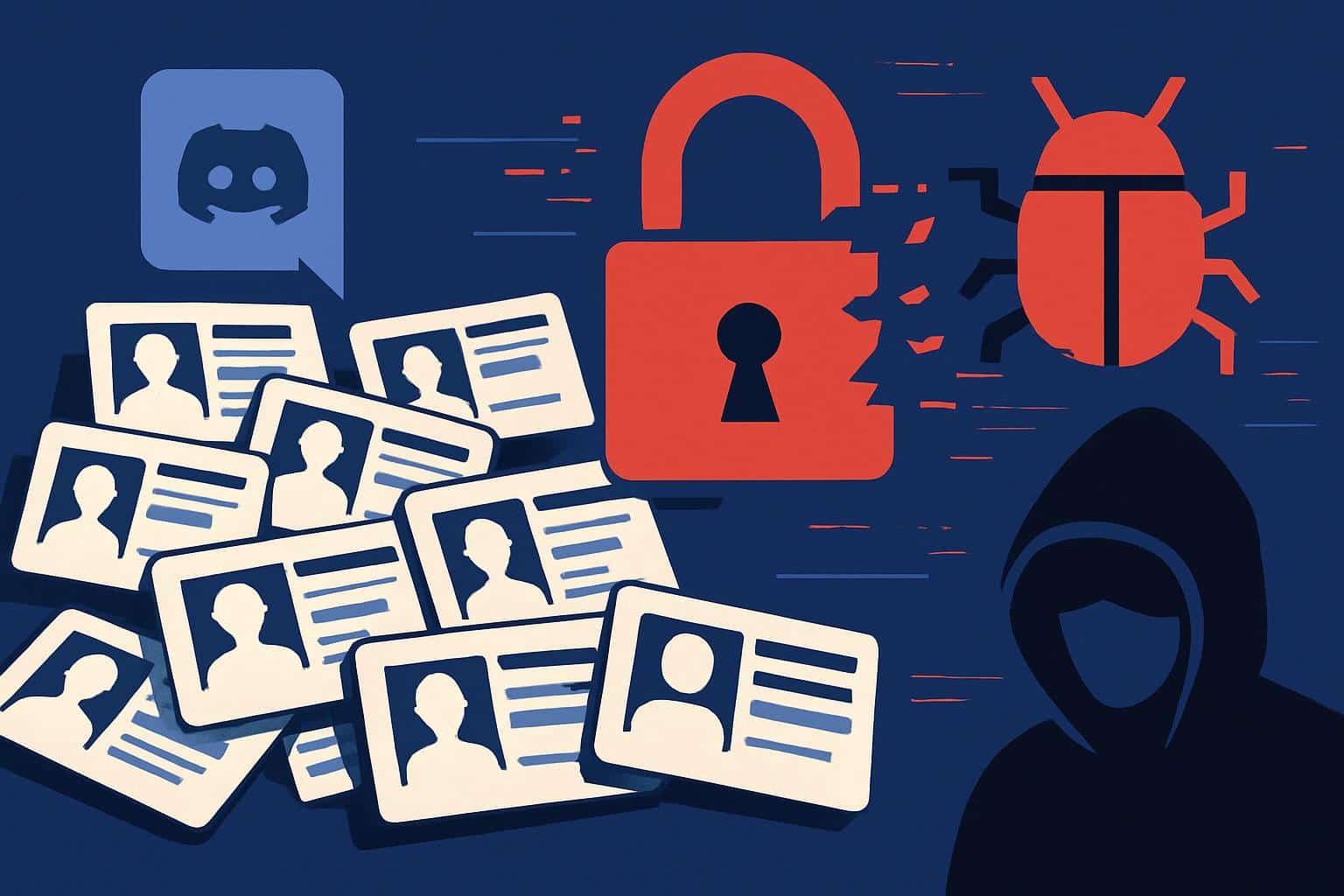Discord said images of government-issued identification uploaded for age verification may have exposed about 70,000 users after a third-party vendor operating its help desk platform was hacked.
Full credit card numbers and passwords were not exposed, the company said, though the trove may have contained names, contact information, IP addresses, purchase history, and payment card information with only the last four digits.

All affected users have been notified, a company spokesperson told The Verge, and the platform is cooperating with law enforcement agencies, data protection authorities, and external security firms. Discord also said it would not pay an attempted ransom associated with the incident.
What Happened and What Data Was Accessed in the Breach
Discord stressed that its back-end systems were not hacked. Rather, a bad actor gained access to a third-party provider that helps manage customer support. That access exposed support tickets and related user data, including some messages sent to customer service. The exposed content likely contained ID photos uploaded as part of regional age verification checks for some users.
The hacker did not have access to sensitive financial data, including full card numbers or account passwords, according to the company. Even so, the combination of identity documents, personal identifiers, and metadata such as IP addresses can be extremely useful to fraudsters for impersonation, doxxing, or targeted phishing. Discord says it refused to pay, and the attacker sought payment.
Why Government ID Images Raise the Stakes for Users
Government ID images are extremely valuable in the underground economy as they facilitate high-confidence impersonation. When used in conjunction with email, phone numbers, and partial payment details, they can be used to complete knowledge-based checks, open accounts, or socially engineer support staff.
That risk is one that regulators and consumer watchdogs have raised repeatedly. The Federal Trade Commission’s Consumer Sentinel Network has recorded more than a million reports of identity theft a year in recent years, and security researchers say image-based credentials are especially hard for victims to cancel or replace. In other words, you can’t easily rotate your face or driver’s license number the way you can change a password.
How Much 70,000 Users Represents in Context
Discord has more than 200 million monthly active users, meaning the affected population is approximately 0.035 percent by simple proportion. What that sliver does, however, is concentrate risk for people who either submitted verification of age or communicated with customer support. For those whose images and contact information are circulating together, the exposure can be significant.
It also highlights a perennial vulnerability: attacks leveraging service providers as pivots. Many of the high-profile tech company debacles in recent years have also been from compromised help desk systems or contractor tools, not hacks into a company’s most essential infrastructure.

What Discord Says It’s Doing After the Vendor Breach
Discord claims that it has reached out to all affected users across the globe and that it is working with authorities. The company repeated that it would not pay ransoms. It also explained that images used for age verification are intended to be deleted after the verification itself, including by their age verification partner, k-ID, but did not specify which particular third-party vendor was involved in this instance.
Security best practices in such a scenario often include rotating credentials, auditing vendor access, and tightening data retention to ensure that fewer images and documents stick around longer than necessary. The effectiveness of these measures depends on how aggressively Discord and its vendors work to delete personal data they have in storage from now on.
What Should People Do Now to Protect Their Accounts
Once you get the notification, be wary of follow-up messages about “verification.” Expect a targeted phishing wave. Visit the settings right in the app instead of following email links. OPSEC: Turn on two-factor authentication, check which apps are connected, and reset any security questions based on publicly known information.
And, where you can, consider checking your credit and placing a credit freeze to thwart new-account fraud. If you think that your ID number may have been compromised, you can inquire with the authority who issued it about replacing documents and additional protections. Parents and guardians should have a conversation with minors who submitted ID photos for age verification.
The Larger Debate Over Online Age Checks
Some governments have pushed platforms to verify the ages of users so minors cannot access adult content and features. Privacy proponents say that the approach of relying on documents centralizes extremely sensitive information with companies and their vendors — exactly one of the honeypots this attack was meant to strike.
Alternatives are gaining momentum, with on-device age estimation, for example, privacy-preserving cryptographic proofs, or standards such as verifiable credentials that allow users to prove being over a threshold without conveying their full ID. Organizations like the Electronic Frontier Foundation and academic researchers have encouraged regulators to prioritize designs that limit data collection and how long it is stored.
For Discord, the episode is a reminder that safety imperatives and privacy dangers can countervail in practice. Age verification that shows less, stores less, and keeps verification on device would mitigate the damage when one vendor gets compromised, even if the platform is untouched.

